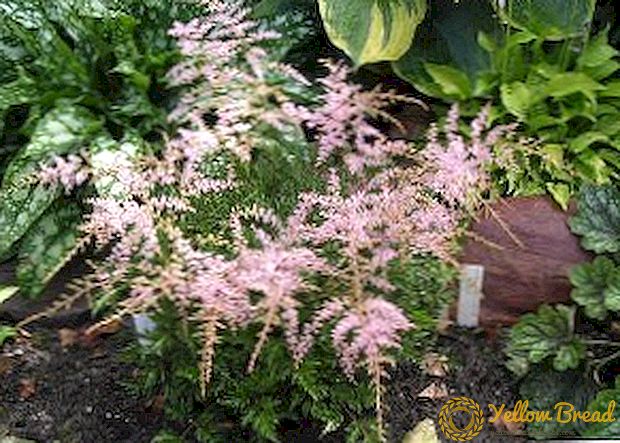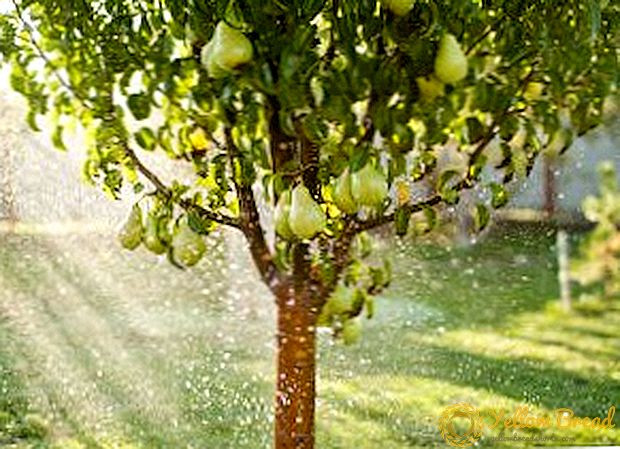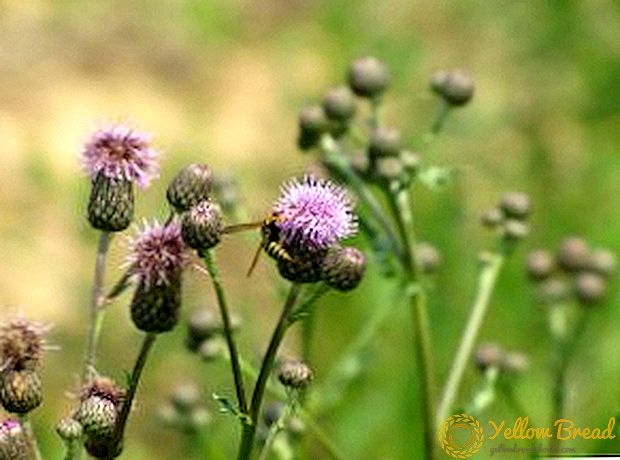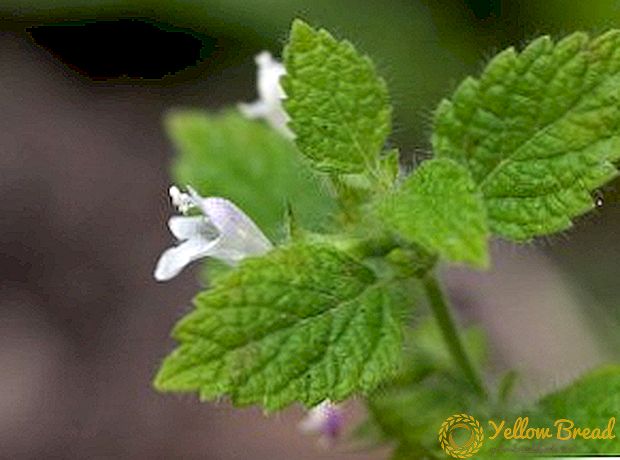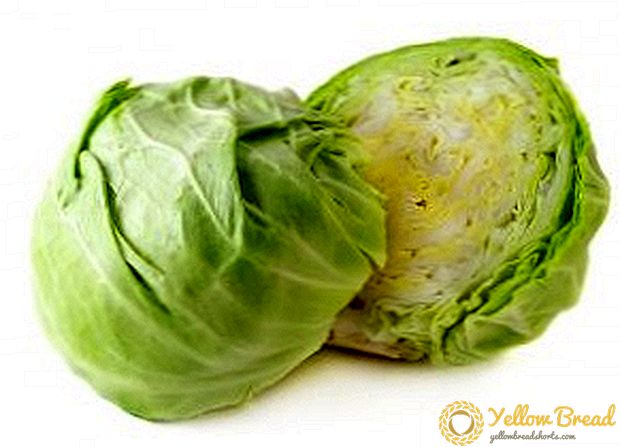
How to grow cabbage in an open home garden: cooking, planting and caring for plants
Cabbage dishes are an adornment of many national cuisines.
The reason for this popularity lies in the unusually wide zoning of this plant, as well as in the beneficial properties it possesses.
With all this, the cultivation of cabbage is a fairly simple process that is not difficult either for experienced gardeners or for novice amateurs.
In any case, we are going to devote this article to all the features of the process of preparing, planting and caring for cabbage, revealing all the secrets of the most successful professionals.
Also, we will acquaint you with some varieties of this plant, and teach you to understand the main criteria by which these varieties differ from each other.
How to prepare for planting cabbage: share the secrets of experienced gardeners and agronomists
Planting cabbage includes many aspects, among which a very important place is occupied by the choice of a good place for planting, preparing both the soil and the seeds for planting. However, do not be intimidated by such a large list - we will reveal all these questions to you in great detail and simply, making you an experienced gardener on a theoretical level.
We select good conditions for the growth of cabbage and get acquainted with other features necessary for this plant.

Turning to the peculiarities of growing this plant, one cannot but dwell on the distinctive features of the cabbage itself, which must be taken into account when it is propagated.
The great advantage of cabbage is its good resistance to low temperatureswhich is very important when taking into account the long growing season of this plant.
In particular, even early varieties, when planted in open ground without seedlings, continue their growing season for 90-120 days. It is for this reason that planting cabbage in open ground without using seedlings, which we want to tell you about, is not a particularly common method, since it is absolutely impossible to use it in mid-latitude and northern regions.
Taking into account the light-loving nature of this plant, it can be planted only on well-lit garden beds that are not shaded almost throughout the daylight hours. The optimal amount of light time required for cabbage for full development is 13 hours.
You should also be aware that cabbage is a biennial plant.In the first year, the head ripens directly from seeds or from seedlings, which is intended for human consumption. In the second year, a peduncle grows from the received head, from which closer to the end of the summer it will be possible to collect seeds.
Preparing the soil for planting cabbage: how to properly loosen and fertilize?
Before you prepare the soil, you need to choose the right one. Of course, using fertilizers can improve the fertility of any type of soil, but it is preferable to plant cabbage on structured and with a high level of natural fertility.
A good option is loam, which contain a large amount of humus. Due to this, moisture is much better and longer contained in the soil, feeding the root system of the plant. Another important requirement for the characteristics of the soil is the absence of acidity or a very low level of this indicator.
Ideally, the predecessors of cabbage in the garden were such plants as cucumbers, onions, various root vegetables, legumes, or cereals. After the growth of such plants in the soil, many nutrients remain that are necessary for cabbage for successful growth and heading.
Preparing the soil for sowing cabbage seeds need to do with the beginning of spring. At this time, it must be dig deep enough, saturating it with necessary oxygen. In the garden should be made not very wide beds, about 1 meter.
If your garden is located in a place where water rises to the surface, it is very important to dig deep caavas around the beds.
Fertilizers should be applied to the soil (with the calculation of the bed area of 1m2):
- About 1-1.5 buckets (10-15 liters) who managed to properet humus. It is also good to use compost.
- Superphosphate in the amount of 2 tablespoons.
- 1 tablespoon of potassium sulfate.
- If possible, add 2 tablespoons of complex fertilizer to the soil.
The most popular varieties of cabbage and their differences

All varieties and hybrids of cabbage are divided into 5 main groups, the main criteria for which are the timing of ripening heads. At the same time, the difference in ripening of the earliest and latest varieties can be 50-70 days.
- Group of early ripe varieties of cabbage.Vegetation lasts for 105-120 days, heads of cabbages ripen in early summer.
The main use of such cabbage - use directly in fresh form. Such cabbage is absolutely not suitable for pickling or storage for the winter period. These include: "June" (cabbages up to 1 kilogram), "Golden Hectar" (5-8.5 kilograms of harvest from 1m2), "Ditmarsher" (mass of cabbages about 2.5 kilograms), "Gift" (from the area 1 m2 collect from 6 to 10 kilograms of cabbage heads).
- Mid-early varieties of cabbage. They mature about 10 days later than the earliest. This cabbage is usually used fresh in the fall, it can also be sour, but only to be eaten immediately (it retains good taste for only 2-3 months)
The most popular in this group are the Stakhanovka varieties (cabbages reach 1.5-2.5 kilograms in weight), Lanedukererele (very large and dense cabbages weighing up to 5 kilograms), F1 Metino (3 kilograms heads of cabbage that can not be cracked).
- Mid-season cabbage - matures within 131-145 days from the time of sowing the seeds. These varieties are more focused on long-term storage, good for pickling.
It is worth paying your attention to the varieties "Slava 1305", which has very large and dense white cabbages weighing up to 5 kilograms, as well as "Slava Gribovskaya 231" with practically the same large cabbages.
- The cabbage varieties belonging to middle-late ones have the widest economic purpose, although it takes a long time to wait for their ripening - 146-160 days.
The heads of such cabbages are simply ideal for keeping down, if you store them in a dry and cool place. “Yield” (head weight ranges from 2.9 to 4.5 kilograms) and “Final” (stable yield up to 50 tons from 1 hectare) are very popular.
- Late-ripening cabbage varieties. Although the safety of the crop of this group of varieties is at the highest level, however, due to the long period of ripening (from 161 to 185 days), it can freeze in many regions.
Such is cabbage "Bagaevskaya" (heading up to 5 kilograms), "Valentine F1" (yield of 1 square meter - 8 kilograms), "Wizard F1" (fruits 2.5-3.5 kilograms).
Only early varieties can be sown in open ground, later only under film.
How to prepare seeds for planting in open ground

In order to improve the stability of seeds and future plants, they are treated with hot water.
For this, cabbage seeds are poured with water at a temperature of 40-45ºС for 15 minutes, and then straightened for a few minutes in cold water.
Also, it is very important at least 12 hours to hold them in a nutrient solution from any mineral fertilizers.
In order to harden the seeds, they still need to be sent for a day in a cold place with a temperature of 1-2ºС, previously washed in cold water. This room can be either a basement or a refrigerator.
Features of landing: the main stages and rules
In order for the cabbage head to form well and ripen, seeds and seedlings need to be sown and planted in well-defined periods. Otherwise, the plant will hurt, develop poorly and the crop will be completely different from what you expected from the variety you have chosen.
At what time can you sow cabbage seeds in open ground?
It is not necessary to start sowing very early, because spring frosts can deprive you of germination. It is best to sow the seeds after the first of May, although in the southern regions this can be done after the first of April, or even in early March.
Thus, even when planting cabbage with seeds in open ground, early cabbage varieties will be able to produce crops by the 20th of July-August.Also, it is not worth delaying with this case, because in August, after 20-30 days, the first autumn frosts can begin, which can greatly harm already harvested, but not sustainable, harvest.
Also, sowing cabbage seed, especially early varieties, can not be done simultaneously. Having made an interval of 2-3 days between crops, you will also stretch the ripening time of the crop.
Scheme of sowing seeds and planting cabbage seedlings

Sowing cabbage seeds in the ground is carried out in a specially prepared for this groove depth of 1 centimeter, and the distance between them is 3-4 cm. Seeds before these very it is important to dry a littleso that they do not stick to the hands, because the seeds are laid in the grooves one by one at a distance of 1 centimeter.
The soil is then slightly tamped. With good weather, shoots will be visible in a week. When the plants reach such a size that they begin to interfere with each other, they need to be seated.
When planting seedlings of early varieties of cabbage, the space between the two rows of plants should not be less than 40-45 centimeters. But in the rows between the two plants will be enough distance of 20-25 centimeters.
For later varieties, the planting pattern will be significantly different. In particular, the spacing will be from 50 to 60 centimeters, and the space between two cabbages - at least 30 centimeters.
How to provide cabbage with the necessary care: the most important instructions
Unfortunately, cabbage cannot grow without regular care. Running it to the state of a wild plant you risk being without a crop. For her, you need to constantly maintain a certain level of soil moisture and do not forget to remove from the bed all the weeds that can very much slow down the development of the cabbage itself.
In addition, there are a large number of pests and diseases, which can sometimes cause great harm to future crops. All this requires from the gardener careful attention to the beds on which the cabbage is planted, as well as the implementation of the actions described below.
Diseases and pests of cabbage: how to resist and fight

For prevention from aphids, various slugs and snails cabbage is recommended powder using wood ash. In this case, about 1 cup of this substance is used per 1 m2.Also, you can use tobacco.
Processed cabbage and with the help of various chemicals designed to destroy or combat a specific problem. If you are an enemy of chemicals, pests can be collected from the plant by hand, while trying to destroy the eggs that they laid.
Effective against insects are infusions made from burdock, tomato tops, or onion peel.
Today, various covering methods are often used to combat them, using special non-covering materials.
But in any case, the most important thing is to be attentive to the plants, constantly monitoring their condition.
We provide moisture beds with cabbage
Cabbage loves moisture, so watering for her necessarily should be regular.
Water every plant immediately after planting, the interval between watering should not be longer than 3-4 days from the time of the previous watering. This regularity should be maintained for two weeks, using about 6-8 liters of water per square meter. Then watering is carried out only once a week, using 10-12 liters for the same area of the bed.
For early varieties abundant watering is preferable in June, but for the later ones - in August. It is very important to irrigate this plant only in the morning or in the evening, using water with a temperature not lower than 18 ºС.
A little bit about feeding cabbage: what fertilizers and in what quantities can I use?

I feed the cabbage often and a lot. The first fertilization in the soil is carried out within 20 days after planting in a permanent place.
Using a solution of mullein: 0.5 liters per 10 liters of water. For each plant you need to spend about 0.5 liters.
The following feeding is carried out in about 10 days. This time the amount of fertilizer needed by one plant is increased to 1 liter.
Also, in the above solution, you will need to add 1 tablespoon of Crystalline.
Korovyak can be replaced and chicken droppings.
The two feedings described are necessarily necessary for both early cabbage varieties and late ones.
The third feeding should be carried out only for late cabbage, it is held in June. In a solution of 10 liters of water give 2 tablespoons of superphosphate.
About 6-8 liters of fertilizer are used per square meter area.This feeding can be repeated in August, using the already nitrophoska.
Stabbing cabbage: what is it and why is it needed?
The hardening of cabbage should be carried out even when it is at the seedling stage. It is necessary only for those plants that were originally grown in greenhouses or in the house.
So, even 15-20 days before her transplant, they slaughter her with low temperatures and light. In order for the seedlings to be more resistant to low temperatures, a film is lifted above it or boxes are brought out onto the balcony.
We can not only allow the temperature to fall below 5-6 ºС. Naturally, this should be done in the daytime and in clear weather so that the plant gets as much sunlight as possible.
Dates and other features of cabbage harvest
Early cabbage can be harvested at the end of July - early August, and in the southern regions - even at the end of June. At the same time, the cabbies should be cut with a sharp knife, since the stalks of this plant are very dense.
Late cabbage, which will be stored throughout the winter, is harvested at the very least - in the last days of October and the first days of November. If you set yourself the goal of sour cabbage - then you need it clean from the beds in mid-October.
To keep the cabbage better, it is cut with a rather long stump. Also, it is important to leave some green leaves near the head of corn that do not fit tightly to it. When storing it is very important to maintain a stable low temperature between 0 and 5 ºС. Optimum air humidity should be in the range of 80-85%.

